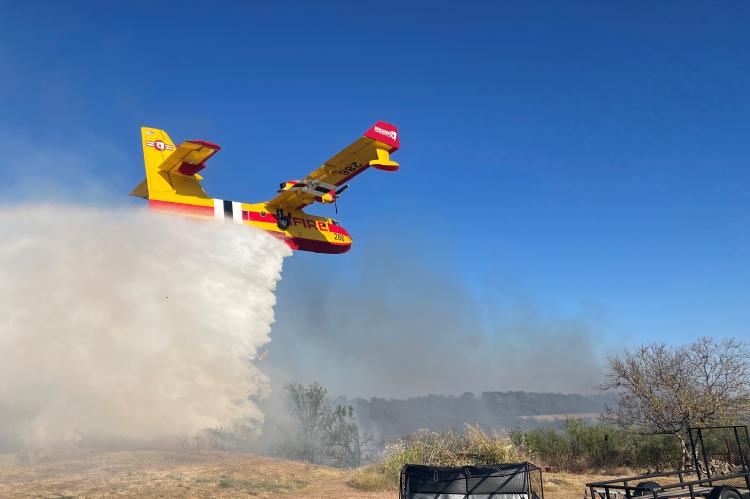Drone and firefighting aircraft have near miss on recent wildfire
COLLEGE STATION — On Friday, a helicopter delivering water to the 150-acre Barth Fire in Caldwell County almost collided with a drone that came within feet of the aircraft.
Drones are a serious safety hazard for both the aviation resources as well as the firefighters on the ground and can cause a serious or fatal accident if they collide with firefighting aircraft.
“Pilots have no way to detect a drone or know there is one present in the airspace until they see it,” said Jared Karns, Texas A&M Forest Service State Aviation Manager. “Suppression aircraft can respond to wildfires quickly, increasing the likelihood that a new ignition remains a small, manageable wildfire. Utilizing aircraft greatly enhances the state’s firefighting efforts, but they have to be able to fly in a safe environment.”
Aerial firefighting may be suspended until the drone leaves the area, which may result in a larger wildfire. Firefighting aircraft, including leadplanes, helicopters and airtankers, fly as low as 150 feet above the ground, which is the same altitude that many hobbyist drones fly.
At the request of Texas A&M Forest Service, the Federal Aviation Administration implements Temporary Flight Restrictions (TFR) around wildfire areas. All aircraft, including drones, are prohibited from flying in these restricted areas. Further, it is a federal crime to interfere with firefighting aircraft regardless of whether restrictions are established.
As persistent triple-digit temperatures and dry conditions result in wildfire danger for much of the state, Texas A&M Forest Service continues to mobilize aircraft to support the state’s response.
Since July, the agency has utilized more than 60 aviation resources to respond to wildfires. These aircraft have responded to countless wildfires, dropping 502,503 gallons of retardant and more than 3.2 million gallons of water to slow fire spread to assist ground crews and protect homes as well as other critical infrastructure.
“These aircraft are responding to incidents every single day,” said Karns. “Please avoid wildfire areas to provide a safe environment for firefighting aircraft and ground crews.”
Since Jan. 1, state and local firefighters have responded to 3,211 wildfires for 110,633 acres burned across the state. More than 1,350 of these fires have occurred in July and August.
For information on the current wildfire situation in Texas, visit https://tfsweb.tamu.edu/CurrentSituation/.
Texas A&M Forest Service does not own any aviation resources but instead uses federal aviation contracts through the USDA Forest Service and Bureau of Land Management for all firefighting aircraft.
Texas A&M Forest Service does not own any aviation resources but instead uses federal aviation contracts through the USDA Forest Service and Bureau of Land Management for all firefighting aircraft.


